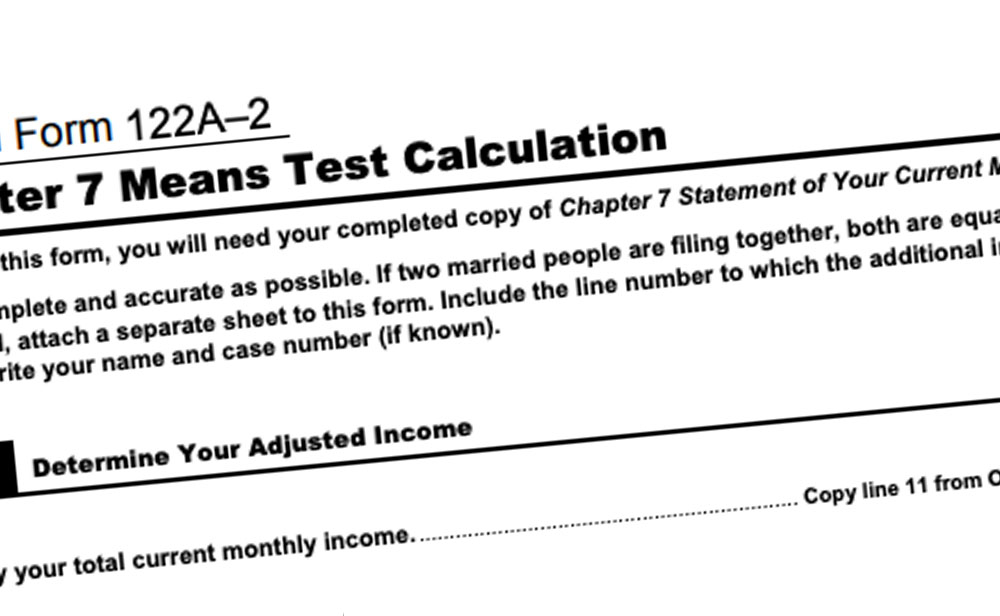If you have done any preliminary research on bankruptcy, you have most likely run into or seen mention of something called the Means Test. The Means Test was formulated in 2005, when the bankruptcy laws were changed, in order to prevent abuse of Chapter 7 bankruptcy. Prior to 2005, almost anyone could qualify for Chapter 7 bankruptcy, whether they had the means to pay their creditors or not. By 2005, Congress had enough and decided to create the Means Test to prevent those who have the ability to repay some of their debt from filing Chapter 7 and avoiding Chapter 13 bankruptcy.
As bankruptcy practitioners we are just as scared of the means test as you are, and we try our hardest to get clients to “pass” the Means Test. Unfortunately, passing the Means Test may no longer be enough. The situation just got meaner as the United States Court of Appeals for the Fourth Circuit recently ruled on a case (Calhoun v. United States Trustee) in which the Debtors “passed” the Means Test but were determined to still have the ability to repay their creditors. When we say someone “passes” the Means Test, we say that the person has so little disposable income that there is no presumption that they are abusing the bankruptcy process if he/she files a Chapter 7 bankruptcy. This rule is outlined in the bankruptcy code section 707(b)(2). However, there is another relevant code section that we often forget. This is section 707(b)(3), which states that a case can be dismissed for abuse if the Debtor is found to have filed in bad faith or if the totality of the circumstances would show abuse (i.e. despite the Means Test result, the Debtor can actually repay some of his/her debt). The Court in Calhoun cited another case in which the factors of abuse were outlined. These included 1) the reason for the bankruptcy filing; 2) whether the family budget and expenses would be considered reasonable; 3) whether the Debtor took cash advances or incurred new consumer debt prior to filing and in amount beyond his ability to repay; 4) whether the filed bankruptcy schedules accurately reflect the Debtor’s income and true financial condition; and 5) whether the petition was filed in good faith (In re Crink, 402 B.R. 159 (Bankr. M.D.N.C. 2009)). In Calhoun, the Court of Appeals affirmed a finding of abuse because Mr. Calhoun had significant income from both retirement and social security. While social security income is not counted in the Means Test it is present, and it gave the Calhouns a monthly income of nearly $8,000.00 for their household of two. Additionally, the Court looked heavily at the Calhoun’s monthly budget and found some of their expenses to be extravagant.
So, as we review our clients’ bankruptcy cases, we must keep in mind that the Means Test is not the only test out there. There is a potentially meaner test that the bankruptcy court can apply that looks at all of the circumstances in a case. While Calhoun is not a case in the Arizona Circuit, we should not overlook 707(b)(3) when we analyze our cases. It is a warning that there are limits to what we can do for our clients. This also means that a potential client should not expect that his/her attorney will file a Chapter 7 bankruptcy when it is not legitimate because it is likely to now be scrutinized under 707(b)(2) and 707(b)(3).
